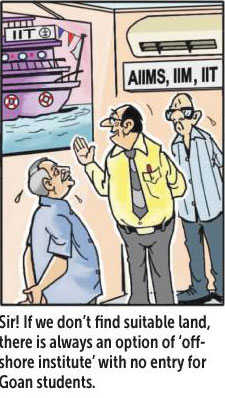26 Jun 2017 | 05:10am IST
The caste question in the Presidential election
India will have a new President a month from now and for sure it will be a Dalit, making him, or her, the second Dalit to occupy Rashtrapathi Bhavan, since K R Narayanan. And, that’s where the election of the President of India has taken a turn that could well have been avoided – the caste equation playing a major role in the choice of candidates.
India will have a new President a month from now and for sure it will be a Dalit, making him, or her, the second Dalit to occupy Rashtrapathi Bhavan, since K R Narayanan. And, that’s where the election of the President of India has taken a turn that could well have been avoided – the caste equation playing a major role in the choice of candidates. The role that caste considerations play in Indian politics has been underlined by the choice of candidates for the Presidential poll.
After the Bharatiya Janata Party nominated Ram Nath Kovind, a Dalit, as its candidate, and got the support of all the National Democratic Alliance parties for his candidature, the Opposition led by the Congress scurried around and nominated another Dalit, Meira Kumar, as its candidate, and got even the Left parties, West Bengal’s Mamata Banerjee and UP’s Mayawati backing her. The nominations of these two candidates make the election not just a Dalit versus Dalit contest, but bring in caste overtones that should have been avoided in an election to the top constitutional post in the country.
No doubt both candidates have qualifications for the position, but these don’t appear to have been what brought them in the race for the country’s top job. Kovind was the Governor of Bihar when his name for the post of President was announced and since then has resigned and also filed his nomination for the President’s election. He is a two-time Rajya Sabha MP and been a Supreme Court lawyer, but what tilted the scale in his favour and got him the nomination appears to be his caste and not these qualifications nor his experience. BJP has been trying to reach out to the Dalits in the country and Kovind’s nomination and election would help them.
Kumar is a former Lok Sabha Speaker, a former Union Minister, a former diplomat, but again what brought her the nomination is her caste and perhaps being the daughter of Dalit leader Babu Jagjivan Ram and the fact that she hails from the State of Bihar. The ‘Bihar Beti’ qualification would be a snub to the current Chief Minister of the State, Nitish Kumar, who though had earlier sought a consensus candidate against the BJP nominee, has already declared his support for Kovind.
But, while fielding a Dalit as candidate for the Presidency of the country is an overt attempt to win over the Dalits in the country, there are very few Dalits holding political office in India. When the various political parties in the country were able to find Dalit candidates worthy of becoming the President of India, they do not seem to find a single Dalit who is capable of leading a State in the country. India, at the present point of time, does not have a single Chief Minister who is a Dalit. And that’s in a country where the Dalit population is 16.6 per cent of the total population.
Caste considerations aside, for the BJP-led NDA, having a person of their choice in Rashtrapati Bhavan is important politically. This is the first opportunity it has got to have a person who subscribes to its ideology as President. In the game of numbers, the NDA has the edge in the electoral college that votes for the President, but the campaign is just beginning and polls are three weeks away. A swing of votes away from Kovind could come only if Nitish Kumar can be convinced to change his mind and back ‘Bihar Beti’ Meira Kumar. Overtures to him have been made but the Bihar Chief Minister has, until now, remained steadfast in his decision. But the opposition will need more than just the JD (U) votes to install Meira Kumar in Rashtrapati Bhavan.
